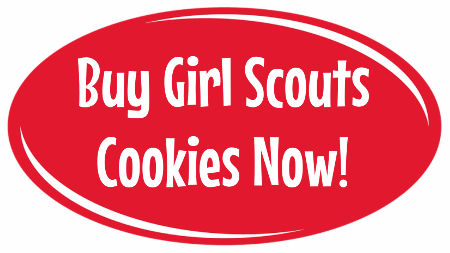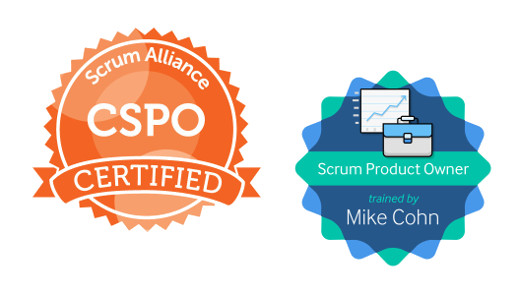How Low Can You Go

On a family road trip to Yellowstone National Park and Mount Rushmore a few years ago we included a stop in Sioux Falls, South Dakota. The decision to make a layover there was due to several factors including its position along our journey, interest to see the eponymous falls of the city, as well as the fact that we once considered moving there.
The following is a tale of potential opportunity, deception and emotions as part of a career change. Names have been suppressed to protect the offenders.
When I was at a crossroads over the direction of my career among the channels I was exploring was postings on LinkedIn. One day such a listing caught my attention – a Director of Technology for an organization in the Greater Minneapolis / St. Paul, Minnesota area. Leading tech in an org in an area where individually both my wife and I had once considered living, plus an area where we had friends and not too far from our then home in Chicago, it seemed logical to consider. Before even checking with my wife, I applied. Granted I told her later that day and she was encouraging of my choice.
Within a few days I heard from the human resources / recruiter, and their message started as typical about receiving my application and interest. It then pivoted in a way I was not expecting. The recruiter said the position was actually in Sioux Falls, South Dakota. They continued that they had problems finding candidates for positions in the past, and thus had advertised it as being in the Twin Cities. Their message concluded by asking if I was still interested.
To put this revelation in context, it is approximately 237 miles from Minneapolis to Sioux Falls, with a driving distance of close to 4 hours. To say that Sioux Falls is in “greater” Minneapolis/St. Paul is like saying New York City is in “greater” Boston! Look on a map if you don’t believe me, but certainly nobody would ever say there’s such a tie between the Big Apple and the Hub.
This was the first deception, and though I say that today I didn’t necessarily say that then. Looking at the description of the role, and with a few other questions answered and in consultation on the home front, I decided to move forward with my candidacy.
This forward motion included further discovery about Sioux Falls and took a two-prong approach – by reaching out to the local chamber of commerce as well as our dentist who was from that area and still had strong ties with it. Again this is discovery – could we consider relocating there, and what were factors to consider. After reviewing materials received and a few conversations, we decided I should continue the interview process. To be honest my wife and I moved to Chicago with less research on the city than we did on Sioux Falls, but that being said Chicago is a much, much different city.
That next step was an interview with the hiring manager, who was the Director of Marketing and whom this role, the Director of Technology, would report to. The Marketing director was part of the parent organization of this new one, and was to move over into this org. Where some may have thought this in itself as a red flag, I didn’t. Over the years I have seen various configurations of organizational structure and have had clients who were in similar roles and I worked well with them. So in a smaller org, I did not see this, in itself, as a concern.
Then came the interview, which would be done over the phone – remember this was over a decade ago, and video interviews weren’t as common as today. I prepared as best as I could for an interview with a Marketing director, including questions that would determine to me their knowledge of technology as well as other factors such as goals, budget, staffing, etc. I also anticipated questions that may be posed to me and appropriate answers for the level of Technology director.
When the phone rang, I popped into an empty office in my co-working space and took it standing, wearing a headset and holding notes in one hand and using the other for note-taking and being expressive! The Marketing director seemed a little hurried in their banter at the beginning of the call, and then asked me to tell me about myself. As I talked about the breadth of my experience, they cut me off at one point and asked me about something I just mentioned, specifically about email marketing. I proceeded to describe how not only have I setup email campaign platforms for clients but also had developed a product offering around email marketing. Again I was interrupted and asked about details of what I did for clients, and talked about developing goals to tactical email templates as well as managing their email lists. Again, I was stopped midstream and they asked for more specifics about how I setup the lists, to which I talked about working with the customers as to whom opted-in to receive email, and once again I was stopped. They then asked if I could populate an email program with email addresses, to which I replied yes, but it seemed the word took a while to come out of my mouth as I started thinking hard about where the line of questioning was going. They then asked if I was able to take email addresses from different kinds of files and put into one database. At this point I was confused and asked why they were asking questions about this level of work for a position that had Director in its title.
The reply was not what I was expected, where the interviewer asked, “I need to know how low can you go.”
It was that one statement that made the ambiguity I had of the call crystal clear, and exposed the second deception – this role was not at a Director level, rather it was for a marketing or technology analyst at best. There is nothing wrong with those roles, but that’s not what I do or bring to the table, not to mention where I was at in my career. You may as well be asking a brain surgeon to put bandages on skinned knees! I then somewhat tuned out the ramblings of the interviewer and told them I am not the person they are looking for, and thanked them for their time. I was polite on the outside but infuriated on the inside. The HR recruiter had followed-up with me and I chose to take the same high road with them too – I didn’t have to and my inner Italian wanted me to let them have it. But I did not, and don’t look at that decision with any regret.
In the end, what was presented as a job I would have to move several states over for was a job I wouldn’t cross the street for!
Other than my wife I only followed up with our dentist and told him about the debacle to which he was sorry to hear. Where over the years I have had poor to bad experiences with recruiters and HR departments, this was and continues to be the worst of my multi-decade career. And I hope it is never superseded by anyone or anything else.
Deconstructing Deceptive Recruiting Practices
We all face challenges in life and work that sometime seem insurmountable. It is in these times that creative, fresh ideas coupled with openness and honesty are needed to achieve our goals. Using deception and justifying it in the name of the challenge is not only wrong, but can have unknown repercussions on you or your organization. Where I let this one pass me by, someone else could have taken this to social media and caused a problem for the upstart organization. Taking a 360 degree view on their decisions, and considering the candidates for this role, could have avoided all of this.
This is from The Hot Iron, a journal on business and technology by Mike Maddaloni.
Did you enjoy this? Subscribe to The Hot Iron by RSS/XML feed or Read by Email
Business • Strategize • Thrive • (0) Comments • PermalinkTen Minutes

Consistency. Some say it is a sign of complacency, where whatever you do is merely repetition and there’s no change or innovation. I like to think consistency is more of a mindset than whatever it is you are executing upon. To this, I have a now defunct Chinese restaurant to thank.
When I last lived in the Boston area I was in the city of Waltham. It was a city of many faces – its past was industrial manufacturing, among other things the birthplace of the microwave oven, and now the home to universities and high-tech firms along Route 128. That transformation is not complete, as the neighborhood I lived in then was still in transition. I was just off of Moody Street, known as the city’s “restaurant row” as it was zoned for locally owned businesses and the home of some great non-chain restaurants.
Among those restaurants was Hong Kong, a take-out Chinese restaurants just around the corner from home off Moody Street. For myself and my newlywed wife, two working professionals, we frequented ordered from there. As one would expect from a local establishment, we got to know the manager and she always recognized us when we phoned in our ordered and picked it up. Sometimes an order was placed for just one of us, often times both, and we’d also order when entertaining friends. No matter the size of the order, no matter the time, the friendly voice of the manager told us the order would be ready in 10 minutes. Always 10, consistently.
For my wife and I, it was almost comical that any order would take the same amount of time no matter the quantity of food. We were only 10 minutes from a fresh, hot and delicious meal.
New Year, Same Consistency
Soon after moving to the Boston area many years before I learned of the “tradition” of ordering Chinese takeout for New Year’s Eve. The concept was then and likely still is now so popular that you had to place your order days in advance of December 31 to ensure you could get it that night. One New Year’s Eve my wife and I decided to stay in and watch Dick Clark and the ball drop in Times Square, and followed tradition and placed an order days in advance at Hong Kong.
When I went to Hong Kong to pick up our order at the appointed time, I was greeted with the usual warm welcome I was accustomed to from the owner. But the happy expression on her face quickly turned to concern as she told me that she did not have an order ready for me, though she remembers taking the order from me earlier in the week.
Grabbing a piece of paper, she retook my order and proceeded to the kitchen. What followed was a very spirited conversation in Chinese. I didn’t know if she and the cooks were yelling or what, but it was something reminiscent of my Italian heritage, just in another language. After a few minutes she came back to the front counter, smiling, and told me my order would be ready... in 10 minutes! On the busiest night of the year, and at the last minute no less. I took a walk around the block, came back for my order, and went home and told my wife the story as we dove into our delicious dinner.
Deconstructing Consistency
We often see consistency on the surface, however there is likely more as you dig deeper into it. Understanding your product or service, knowing yourself and a commitment to excellence are all part of what delivers consistency. Where the final output may be similar each time, under the hood there is a lot at play that is likely changing and adapting to ensure a consistent end result. Although the Hong Kong restaurant on Moody Street in Waltham, Massachusetts is long gone, its spirit lives on in my own commitment to delivering consistency, and adapting to ensure of it.
This is from The Hot Iron, a journal on business and technology by Mike Maddaloni.
Did you enjoy this? Subscribe to The Hot Iron by RSS/XML feed or Read by Email
Business • Strategize • Thrive • (0) Comments • PermalinkIt’s Girl Scout Cookie Time
Once again, my daughter is selling Girl Scout cookies. And once again, you my dear reader can have the unique opportunity to support her and the girls in her troop in their learning and developing in scouting, all the while enjoying these tasty cookies!
Whether you go down the traditional path with Thin Mints, Caramel deLites, Shortbreads, Peanut Butter Sandwiches and Peanut Butter Patties, or try the newer varieties including Caramel Chocolate Chip, Lemonades, Toast-Yays and Adventurefuls, you can’t go wrong! Some of these are even gluten free and vegan. All can be shipped directly to the comfort of your own home, wherever you are.
Even if you don’t want cookies but want to support her troop, you can buy “Cookie Shares” where boxes of cookies are donated to worthy causes.
To buy, simply click on the bug red button below:If you don’t see the button or if the link doesn’t work, click here to Buy Girl Scout Cookies Now!
My daughter thanks you in advance for the dozens of boxes of cookies you will be buying! The proceeds of the sales that go to her Girl Scouts troop will help subsidize the activities and badges they are earning throughout the school year as well as Girl Scouts summer camps, which have all pretty much opened back up to normal.
This is from The Hot Iron, a journal on business and technology by Mike Maddaloni.
Did you enjoy this? Subscribe to The Hot Iron by RSS/XML feed or Read by Email
Announcements • Thrive • (0) Comments • PermalinkThoughts on Writing 1000 Blog Posts

My last post at The Hot Iron, Lower the Minimum Age to Work, was the one-thousandth post I have written for my blog over the almost 15 years since I started it.
I say that calls for acknowledgment and some reflection.
Where It Began
Over the years I have often mentioned why I started and have continued this blog. In short, I had a client of my Web business who asked me to stop building them a Web site and build them a blog first using specific software. After building theirs, I realized I had no “showcase” blog to use as an example to future clients. I had registered the domain name thehotiron.com years earlier, as I thought a play on “strike while the iron is hot” was a good name for a blog. At the end of 2006, what you are reading this from was born.
I slowly got into writing, namely as I wasn’t much of a writer previously. Some posts were things on my mind, others were on what was bugging me, and others were a way to promote myself and my business. Types of posts emerged over the years, such as mobile phone evaluations, book takeaways and What I Learned for the previous week. No matter what I wrote, I tried to contribute something unique to the global conversation. Looking back on random posts as I am writing this, I think I did a good job at keeping to this mission.
1,000 Could Have Been Sooner, Thanks Social Media
There’s no doubt on the impact on social media in the world. A little closer to home, it certainly impacted what and how often I wrote on my blog. Something that was bugging me could easily be boiled down to 120 characters in a Tweet or a little longer in a Facebook post. Over time however those social accounts have gone away or ground down to a halt, as I have preferred to write in longer form in a platform I control. Am I anti-social? No – I certainly do share links on social media to my blog posts. However it’s nice to have my collection of written thoughts in one place, making The Hot Iron the center of my digital presence – something I have written about before and will continue to in the future. Judging by the little bit of observing I do of hits to the blog, others do find me here and keep coming back.
What’s Next
A grand of posts down, another to go? We’ll see, as I stopped making predictions here a long time ago. A little celebration to go along with this reflection... now that’s something that will happen for certain.
This is from The Hot Iron, a journal on business and technology by Mike Maddaloni.
Did you enjoy this? Subscribe to The Hot Iron by RSS/XML feed or Read by Email
Announcements • Blogging • Thrive • (3) Comments • PermalinkMike Maddaloni Is A Certified Scrum Product Owner
Another timeout for a little self-promotion as I am proud to announce I am now a Certified Scrum Product Owner, or CSPO. A week ago I took a 2-day course and in the process gained certification through Scrum Alliance.
What is a CSPO?
A CSPO is a practitioner of the Scrum. With its origins in software development, Scrum is “framework within which people can address complex adaptive problems, while productively and creatively delivering products of the highest possible value.” A product owner is one of 3 roles on a Scrum team, along with the Scrum Master and Developers. The team delivers software, or whatever the work product is, in an iterative approach over periods of time called sprints, where a sprint can last a few weeks to a month. You can read more on Scrum in the Scrum Guide the “bible” on the framework.The role of the Product Owner is an empowered representative of the stakeholders for the product the entire Scrum team is working on. Its mission is to maximize the value of the product for said stakeholders and its users. High-level responsibilities include defining the Product Goal, managing the Product Backlog (or what the team will be working on), communicating and ensuring transparency.
Why the Product Owner Course? And didn’t you take the Scrum Master course?
Last year I took the course and exam to become a Certified ScrumMaster through Scrum Alliance. Through this process, I was really intrigued by the Product Owner role. In my current job, in many regards I serve as a Product Owner more than I do a Scrum Master. Also, I found a lot more emphasis on the Scrum Master role on the Scrum team “out there” more than I did on the Product Owner. This led me to pursue this course of study and serve in this capacity. Even had I not had this strong interest in being a Product Owner, I feel it important to understand all of the Scrum team roles to better serve as one of them.
The Course Itself
Before the global lockdowns last year, Scrum courses were never taught remotely. You would take a course near you or travel to take one in person. The Scrum Master course I took last year was virtual, though I had signed up for it as an in-person course originally. I was pleased with the last-minute pivot, the instructor and learned a lot from it.
All Scrum trainers have since gone to a virtual model. Where some courses are now starting to be taught in person, the majority are still online. This opened wide the possibilities from where to take the course. As I chose to continue courses through Scrum Alliance, I took the CSPO course through Mike Cohn, a veteran Scrum practitioner, trainer and author.Where I have only taken a few courses online over the years, this was by far the best offering I have experienced. The online “space” is integrated into Agile Mentors, a community and resource center whose membership is included for a year with the course. Before the live sessions, there was about 4 hours of “basics” videos going over the core of the Product Owner role, including quizzes throughout. It was structured this way to ensure to maximize the 2 days of live instruction, and it worked very well. I was equally impressed with the design of the overall experience – Cohn and his Mountain Goat Software spent a considerable amount of time in the branding and technology for this and all of their products.
No exam?
At the lunch break during the first day of the course it dawned on me there was no mention of an exam following the course to earn the certification. During the Q&A at the end of the day I asked this “meta” question. A good discussion followed and Cohn went into great detail on it from his own experience – he was a founder of the Scrum Alliance, and he said for this role it is a challenge to create questions for such an exam, as he has tried himself. Cohn’s upfront and no-nonsense approach was also a selling point for me on training with him. The non-binding quizzes throughout the pre-course videos did help in reinforcing the materials.
Without an exam and by actively participating in the course, this is the only qualification for the CSPO certification. Where I felt it was a little anticlimactic, I have decided it will be up to me to challenge myself as a Product Owner and always quiz myself. But what a better challenge for Scrum Alliance to develop an exam for this certification!
Next Steps and Kudos
I am looking forward to my continued journey with Scrum, the better way to do things – just ask Elon Musk! I have been asked my employer to help emphasize and further the Product Owner role, and I am up to the task. I also welcome your questions on Scrum in general. If you are thinking of studying for it as I did, I highly recommend the course from Mike Cohn. Thanks to him, Stacey Ackerman of the Agile Mentors community and the numerous classmates I had from around the area and the world who made the CSPO course a memorable experience.
This is from The Hot Iron, a journal on business and technology by Mike Maddaloni.
Did you enjoy this? Subscribe to The Hot Iron by RSS/XML feed or Read by Email
Announcements • Business • Agile / Scrum • Thrive • (0) Comments • Permalink



